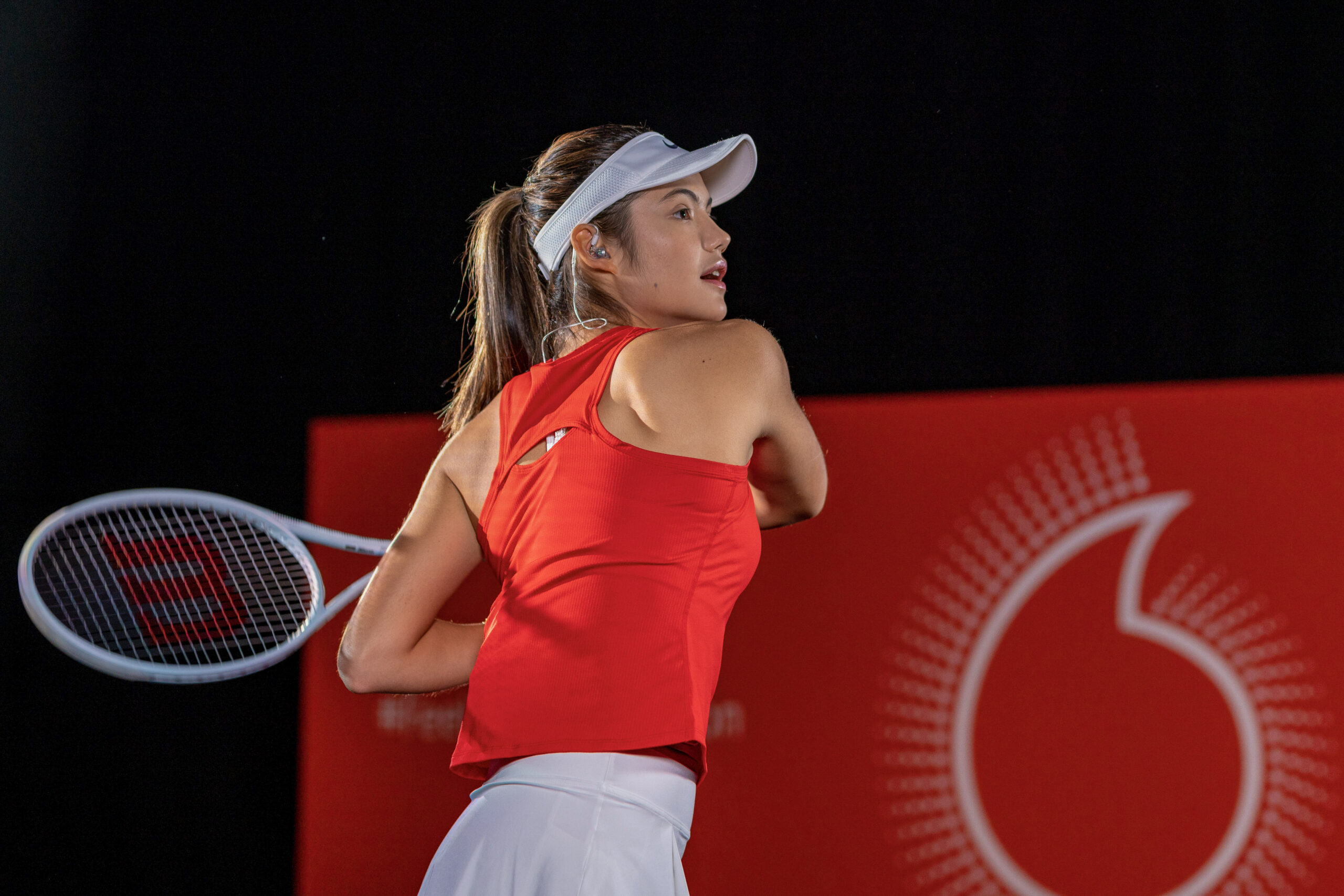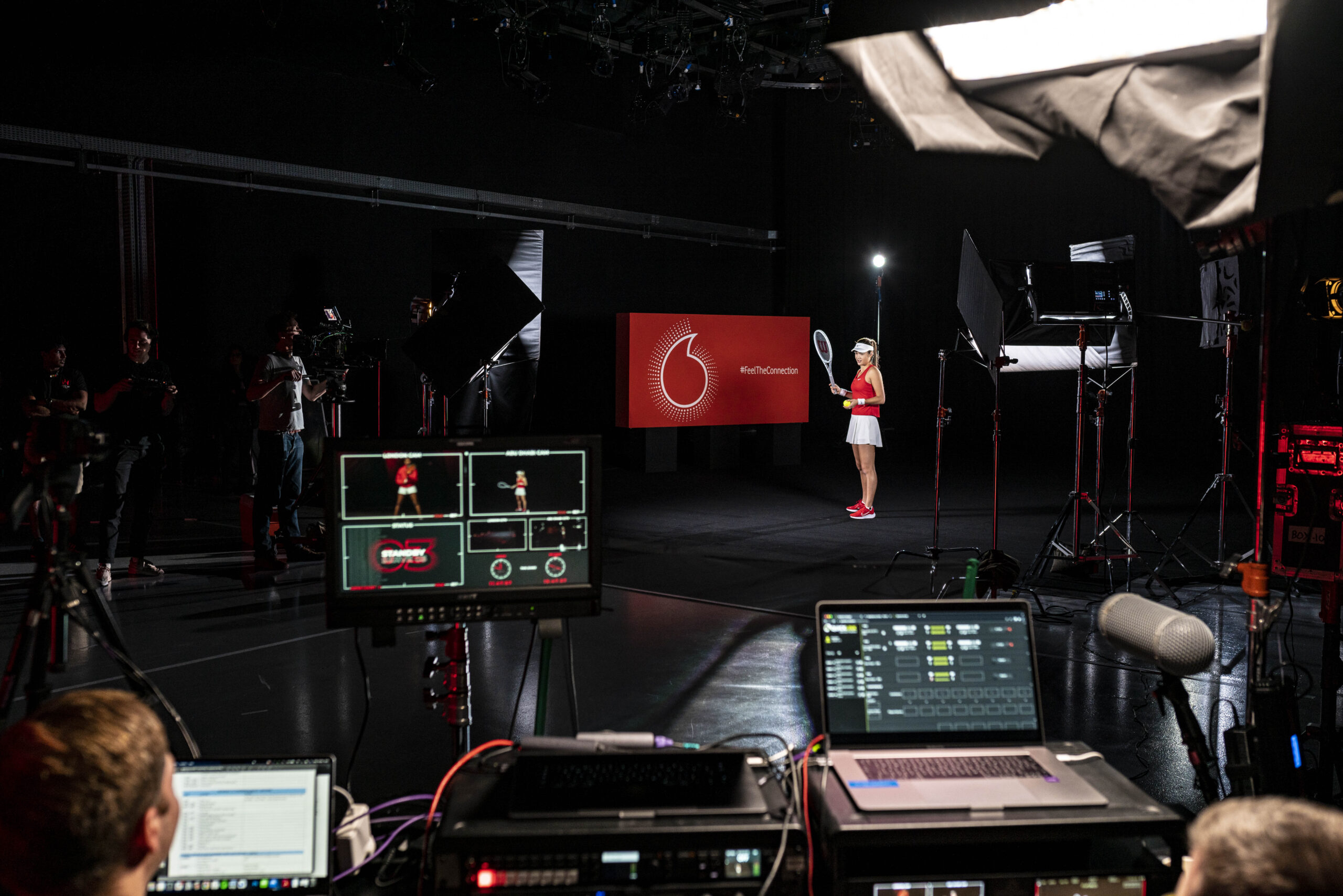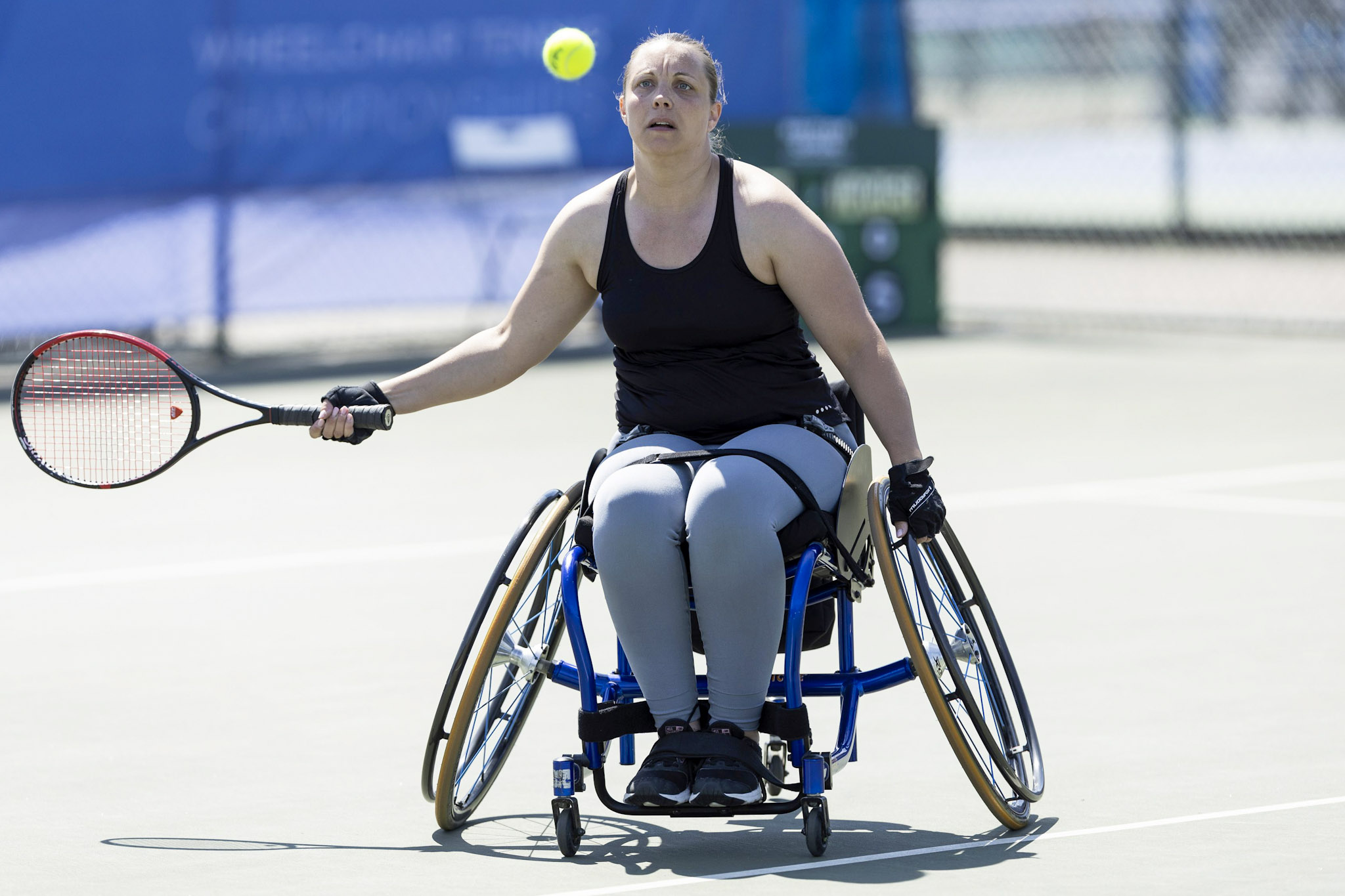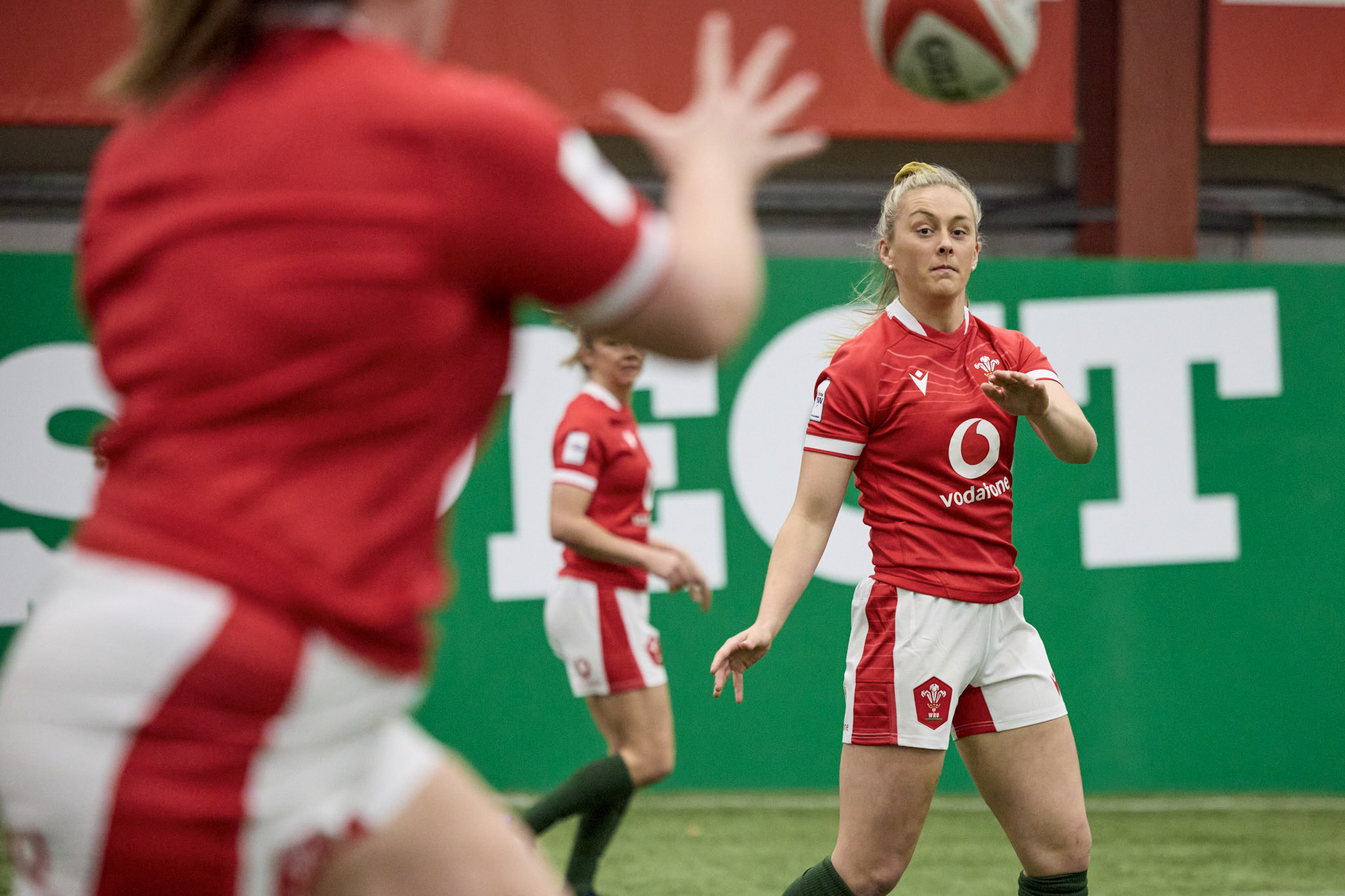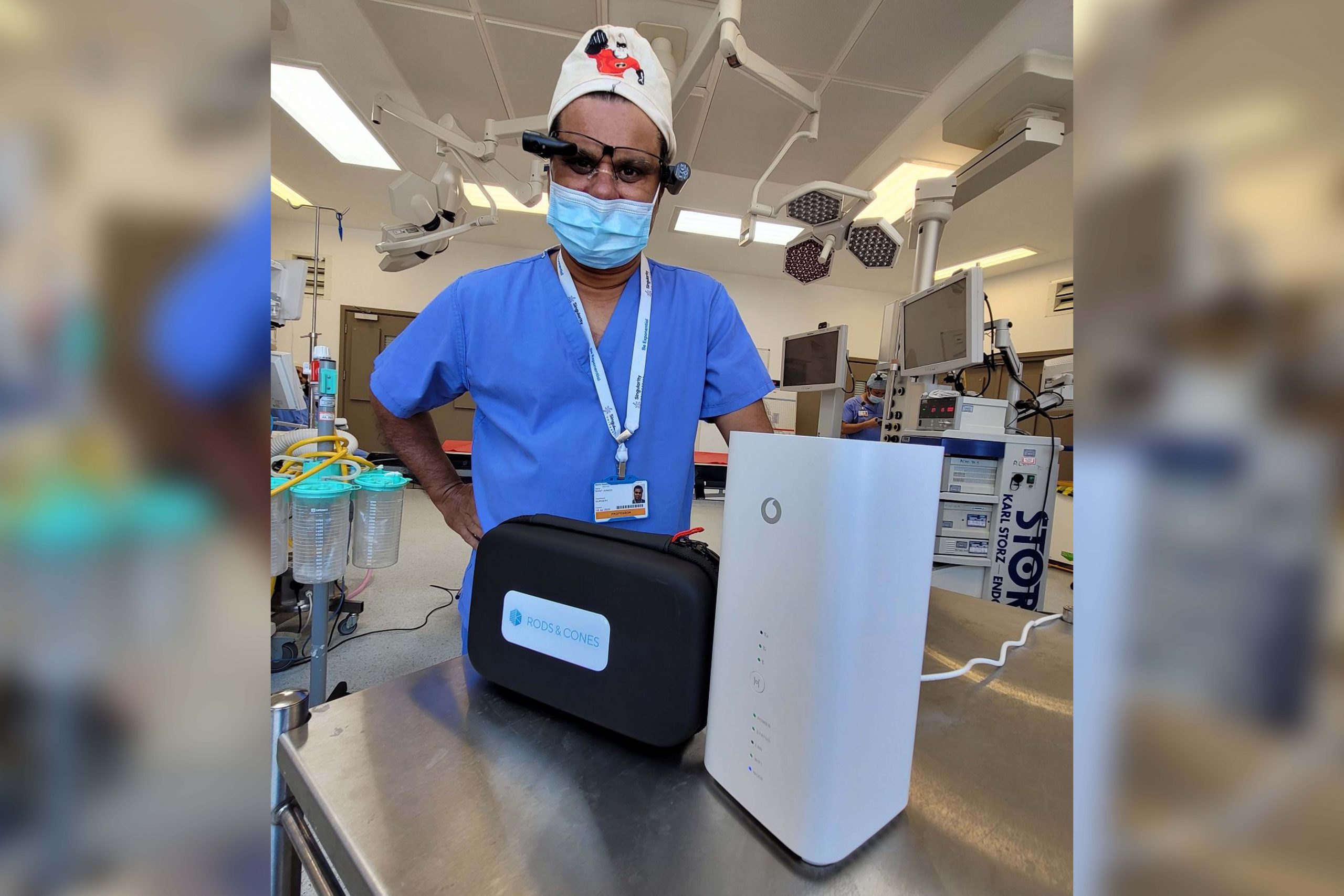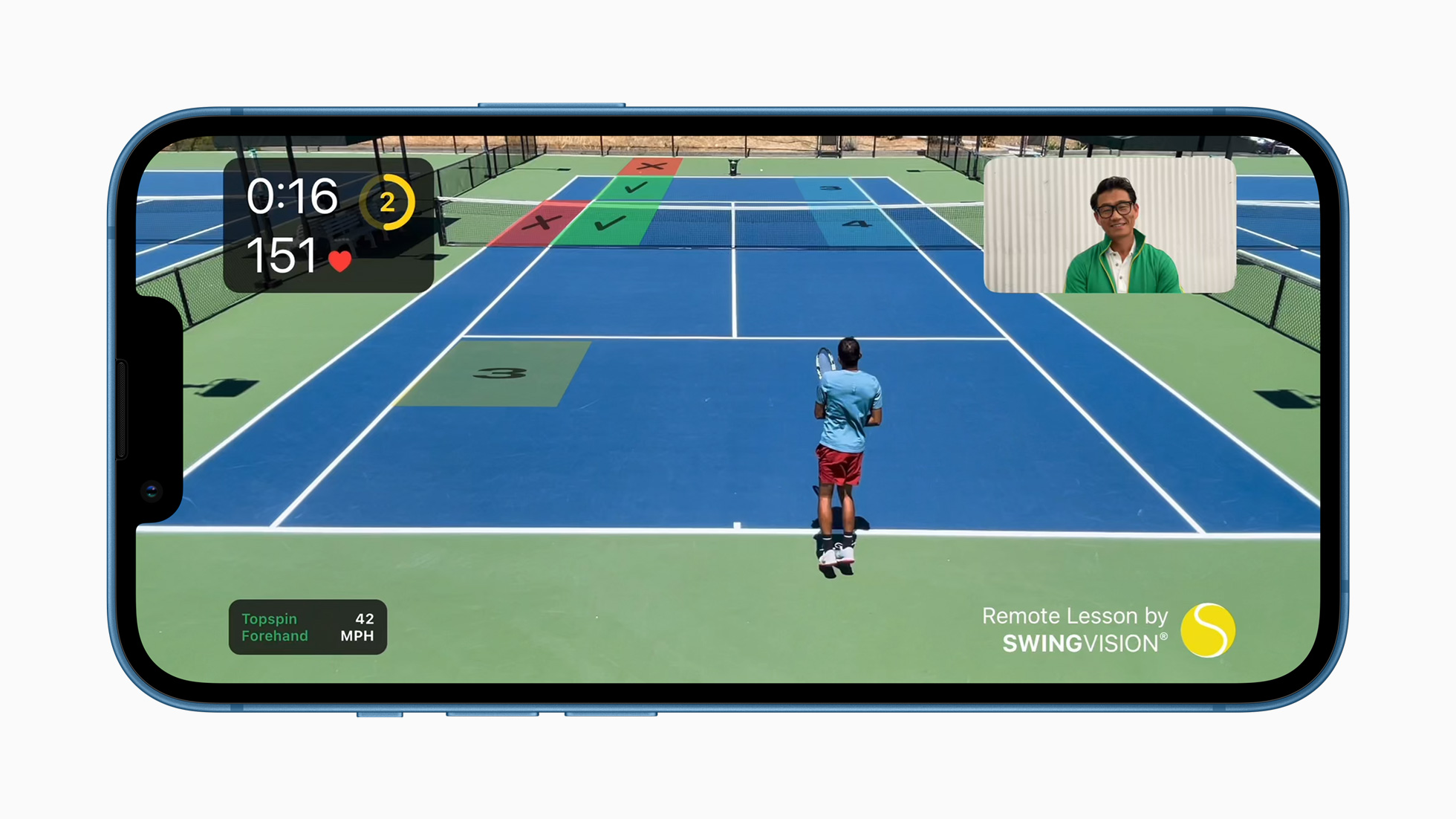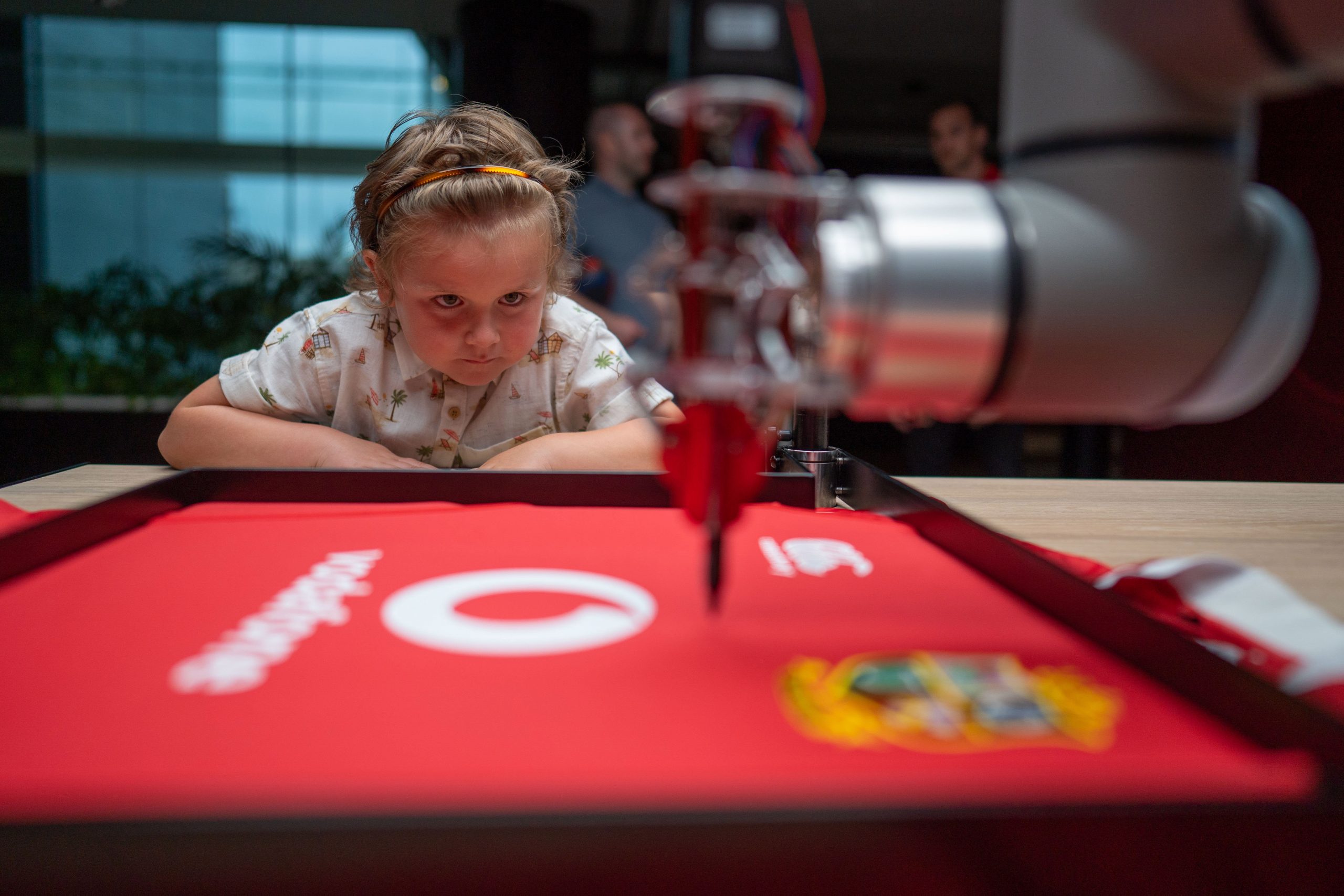Tennis superstar surprises kids with once-in-a-lifetime training session from over 4,000 miles (7,000km) away.
- Emma Raducanu surprises two young grassroots tennis players with the first-ever 5G hologram tennis coaching session, while more than 4,000 miles away.
- Emma appeared as a live 3D hologram in London and led an unforgettable training session all the way from her training camp in Abu Dhabi.
- Vodafone’s superfast 5G, combined with new 3D technology, meant there was no delay between Emma in Abu Dhabi and her 5G hologram in London.
- Vodafone showcases how 5G connectivity and technology has the potential to change coaching by connecting promising grassroots tennis players with the very best coaches from around the world.
- New research from Vodafone has revealed that almost half of Brits (47%) believe future advances in technology could improve the way children learn to play the game. 43% think it could change how they’re introduced to the sport.
- Dr Ian Pearson, futurologist, predicts that technology – such as Vodafone 5G – has the potential to open up endless possibilities for tennis in the future.
Thanks to new hologram technology powered by Vodafone’s 5G network, 20-year-old tennis superstar Emma Raducanu has surprised two talented young grassroots tennis players with the first-ever 5G holographic coaching session – despite them being 4,370 miles (7,032km) apart.
The once-in-a-lifetime lesson came as a complete surprise to Sam Clague, 14, from Wiltshire and T’nae Diamond Paisley, 12, from Birmingham. Emma appeared as a live 3D hologram in London and led an unforgettable training session with the talented youngsters all the way from her training camp in Abu Dhabi.
The lesson was delivered live and in real time over Vodafone’s 5G network. Superfast 5G and innovative 3D holographic technology meant that, despite the huge distance, there was no delay between Emma delivering the lesson in Abu Dhabi and her 5G hologram on court at the All England Club’s Community Tennis Centre in London.
Vodafone makes UK’s first holographic call using 5G
England and Manchester City Captain Steph Houghton MBE meets young fan Iris virtually as a hologram at the Vodafone Future Ready Conference on Thursday, 20 September 2018.
Emma gave advice and top tips on technique, while Sam and T’nae both had the chance to ask their tennis idol questions and capture a once-in-a-lifetime hologram selfie with her.
The lesson showcases how 5G connectivity and technology has the potential to change coaching in tennis by connecting promising young players to the very best coaches wherever they are in the world.
Vodafone has commissioned a new piece of research exploring the future of technology in tennis and found that almost half of Brits (47%) believe future advances in the game could improve the way children learn to play, while 43% think it could change the way they are introduced to the sport. Almost 7-in-10 (66%) tennis fans believe remote coaching using holographic technology could help inspire the next generation of tennis players.
Emma Raducanu, Vodafone’s Play Your Way to Wimbledon Ambassador, said: “The next generation of tennis starts with the future generation of players. Coaching Sam and T’nae in the first-ever 5G hologram lesson only scratches the surface with this type of technology and hopefully means coaches will be able to train the next Wimbledon champion wherever they are in the world.”
As the future of tennis continues to evolve, the study has predicted the sport could advance to include smart balls (19%), smart nets (18%) and smart sweatbands (17%) that provide in-depth data on the game, as well as the addition of hologram coaches who are able to go on court during matches (16%).
The research also revealed that self-controllable drone cameras (15%) and smart sensors on players (17%) are the other tech modifications fans would like to see in the future.
Rugby fans have their Lions jerseys autographed live from 8,000 miles away in world first 5G signing
In a world first, a 5G-powered robot allowed British & Irish Lions players to surprise UK-based fans with live shirt signings over the Vodafone 5G network - all the way from South Africa.
Dr Ian Pearson, futurologist, has shared his own predictions for how 5G, the technology that powered the holographic coaching session, could blur the boundaries between real life and virtual reality, allowing tennis matches and coaching to take place with anyone, anywhere…even in space! Dr Pearson’s full predictions can be found below in the Notes to Editors.
Dr Pearson also commented: “Vodafone’s 5G technology opens up endless possibilities for tennis in the future. Seeing the tech in action, with Emma Raducanu coaching the next generation of British players, is just the first of so many real-life applications of this tech in sports across the world.”
According to the data, the public are already calling out for technological changes in the sport, with 63% wanting a more interactive experience and 62% wanting to feel more immersed in the action – whether watching on TV or in person. Almost a fifth (17%) of tennis fans would love to see this interaction through body cameras on the players.
Vodafone launches new menstrual cycle tracking technology with the Women’s Welsh Rugby Union
The new menstrual tracking programme is part of Vodafone’s PLAYER.Connect platform, which aggregates data from athletes’ wearable devices in real-time, allowing for instant analysis.
Max Taylor, Vodafone’s UK Chief Commercial Officer, said: “Our 5G hologram coaching session with Emma Raducanu showcases the power of our 5G network. We are committed to using our connectivity to create opportunities for the next generation of talent.”
Sam and T’nae are both competing in Play Your Way to Wimbledon, powered by Vodafone, the UK’s largest individual mass participation tennis competition which provides players with the opportunity to compete on the world-famous grass courts at Wimbledon. 2023 sees the competition open-up to more players, with nine regional disability events split between Visual Impairment, Learning Disability and Wheelchair tennis categories acting as qualifying tournaments.
Vodafone is the Official Connectivity Partner to Wimbledon and The All England Lawn Tennis Club.
Grand Slam champion inspires wheelchair tennis hopefuls in Loughborough
Alfie Hewett made a surprise appearance at one of the regional qualifiers for Play Your Way to Wimbledon, powered by Vodafone.
Stay up-to-date with the very latest news from Vodafone by following us on Twitter and signing up for News Centre website notifications.
-Ends-
Notes to Editors:
Dr Ian Pearson BSc DSc (hc) CITP MBCS FWAAS has put together his top four predictions on how technology will impact the future of tennis:
Play anywhere, anytime: 5G will see the boundaries between real life and virtual reality blur, allowing tennis matches to take place with anyone, anywhere…even in space!
As well as enabling the introduction of virtual training sessions, 5G will also underpin the incoming technology of mixed reality headsets; letting people play tennis in outlandish virtual environments such as space stations, mountainsides, or the middle of lakes. Through 5G, the future of tennis will see increased synergy between real life tennis courts and the rich imagination we see in computer games – playing whenever, wherever and whoever you want.
Ultrafast gameplay reporting: Superfast information transfer from smart tech will reduce errors to take gameplay reporting to a new level of precision.
Virtual umpiring and game capture will benefit from increased accuracy thanks to the introduction of smart sensors in tennis balls, rackets, sportswear, and even on (and in) players. As almost a third (31%) of tennis fans love the skill involved in professional tennis, this will allow the transmission of a massive volume of data which will minimise referee errors and increase reporting accuracy.
Experience the match as your favourite player: Switch the sofa for the court with fully immersive sensory viewing.
By 2030, with active skin technology, the playing styles and even the sensations of top-level players could be captured, so that anyone could experience how it actually felt to play that game through full sensory virtual reality.
Best-in-class coaching: 5G will see coaching taken to a new standard with tech embedded into sportswear to help players engineer the perfect ace.
AI-controlled outfits made from smart materials, such as fabrics embedded with sensors, can help players find the perfect stroke when hitting or returning a serve by quickly learning the muscle memory of a flawless forehand. Using direct feedback from friendly virtual AI coaches (with the potential to appear as current or historic stars!), new players can develop and learn much more quickly.
Pixel 6 and iPhone 13: How smartphones are now clever enough to coach you at tennis
Artificial Intelligence (AI) now lives inside the brain of the latest smartphones, opening up intriguing new possibilities in the apps we use, from tracking your tennis swings to helping you sing your heart out.
Top 20 changes tennis fans would like to see in the future
- ‘Smart-balls’ which provide detailed data about the game, each hit and each play.
- Smart watches or sweatbands that give the viewer analysis and biometrics of how each player is performing.
- Live ‘on-board’ camera feed, showing the umpires’ perspective during a match.
- Live ‘on-board’ camera feed, showing the players’ perspective during a match.
- Smart sensors on players, providing metrics and data in real time to viewers.
- Smart nets which give data on the game, ball velocity etc.
- Virtual games – where professional players play against holograms of classic retired athletes.
- A 5G hologram on-court coach to help the player analyse the game in more depth
- ‘Tennis glasses’ for viewers, displaying real-time game and player stats.
- Players testing their skills against robotic arms, trained with AI to know all their plays and moves.
- Pilotable drone cameras to let you direct your own viewing experience from a birds-eye view of the court.
- Virtual games – where professional players play against holograms who can match their skill.
- More varied and outlandish match destinations, such as on the side of a mountain, floating on a body of water etc.
- Connected rackets which send data instantly to viewers, for more game stats.
- Multi-ball mode, where more tennis balls are introduced for added excitement.
- Virtual interviews with the players during breaks in the match.
- Virtual interactions with players and coaches during the match.
- More varied playing surfaces.
- Rotating and tilting courts to make the match more challenging.
- Bigger courts.
How the 5G GigaCube is keeping surgeons and gamers connected
From living rooms to operating theatres, 5G-powered routers like Vodafone’s GigaCube can provide fast and reliable internet connections – a potential lifeline where traditional fixed-line broadband isn’t available or isn't fast enough.
*First ever virtual coaching session using a hologram, powered by a Vodafone Gigacube on the Vodafone 5G network. To get 5G, you must have a 5G enabled plan and be in a 5G coverage area.
Research methodology: research was conducted by OnePoll, in a survey of 2,000 UK tennis fans. Research conducted in December 2022.
